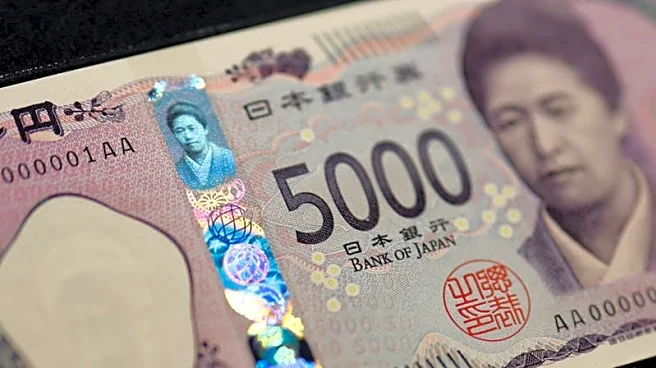What is the story about?
What's Happening?
Gold prices have surged past the $4,000 per ounce mark for the first time, driven by investor interest in safe-haven assets amid economic and political uncertainty. The rise in gold prices is attributed to several factors, including a weakening U.S. dollar, trade uncertainties, and fears of a slowing economy. The U.S. labor market's weakening, rising inflation, and a government shutdown have further fueled anxieties. President Trump's attacks on the Federal Reserve have also shaken investor confidence in U.S. Treasury bonds. The popularity of gold investments, such as the GLD exchange-traded fund, has reached record levels, with over $35 billion in investor funds flowing into it this year.
Why It's Important?
The surge in gold prices reflects broader economic and political stress, highlighting investor concerns about global stability. As gold is traditionally seen as a hedge against uncertainty, its rising value indicates a lack of confidence in other investment vehicles. The weakening U.S. dollar makes gold more attractive to foreign investors, further driving up prices. This trend could impact various sectors, including retail, where companies like Costco have reported increased sales of gold bars. The situation underscores the challenges faced by policymakers in stabilizing the economy and maintaining investor confidence.
What's Next?
The continued rise in gold prices may prompt further investment in safe-haven assets, potentially affecting stock market dynamics. Investors may continue to seek alternatives to traditional investments, impacting sectors reliant on consumer confidence and spending. The Federal Reserve's actions regarding interest rates will be closely watched, as they could influence market stability and investor behavior. Additionally, ongoing political developments and trade negotiations may further impact economic conditions and investor sentiment.
Beyond the Headlines
The record-breaking gold prices highlight the ethical and economic implications of investing in non-productive assets. While gold serves as a financial safeguard, it does not generate income until sold, posing challenges for long-term investment strategies. The reliance on gold during periods of fear and uncertainty raises questions about the sustainability of such investment practices and their impact on global economic stability.
AI Generated Content
Do you find this article useful?














